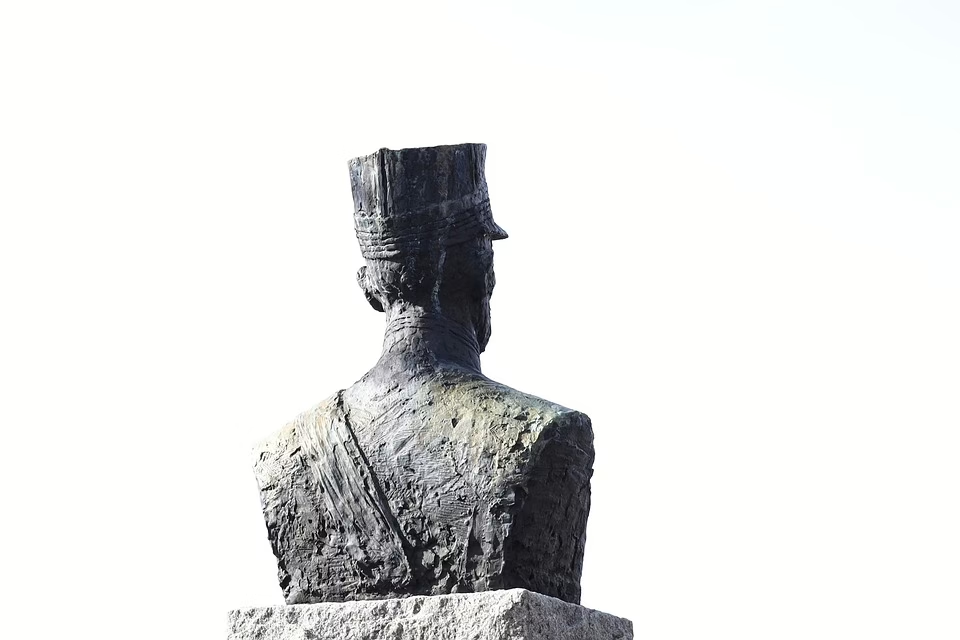Cultural Exchange: How Migration Influenced World History
Introduction
Cultural exchange, as a product of migration, has profoundly shaped world history. The movement of people across borders has led to the intermingling of diverse cultures, languages, religions, and traditions. This article explores how migration has facilitated cultural exchange and contributed to the development of civilizations globally. We will examine key historical events, migration patterns, and the lasting impacts of these exchanges.
Chapter 1: The Nature of Migration
1.1 Definition and Types of Migration
Migration refers to the movement of people from one place to another, often across political or geographical boundaries. It can be classified into several categories:
- Voluntary Migration: Individuals migrate for better opportunities, such as employment or education.
- Involuntary Migration: People are forced to leave their homes due to conflict, persecution, or natural disasters.
- Internal Migration: Movement within a country.
- International Migration: Movement across international borders.
Each of these types contributes to cultural exchange in unique ways, affecting the societies and cultures involved.
1.2 Historical Context of Migration
Human migration is not a modern phenomenon; it has been a critical aspect of human history. From early hunter-gatherer societies moving in search of resources to the mass migrations during the Industrial Revolution, each era has seen shifts in populations that have influenced cultures globally.
Chapter 2: Migration and Cultural Exchange in Ancient Societies
2.1 The Migration of Early Humans
The initial migration of Homo sapiens out of Africa approximately 60,000 years ago brought diverse groups into contact with one another. These encounters led to the sharing of knowledge, tools, and culture. Artifacts such as cave paintings and tools suggest interaction, which facilitated advancements in technology and culture.
2.2 The Role of Trade Routes
Trade routes like the Silk Road were pivotal in cultural exchange. Merchants and pilgrims traveling between Asia and Europe not only traded goods but also ideas, religions, and technologies. Buddhism, for example, spread from India to China through these routes, transforming spiritual practices in various regions.
2.3 The Hellenistic Period
The conquests of Alexander the Great led to the spread of Greek culture across the Mediterranean and into Asia. This cultural diffusion resulted in the Hellenistic civilization, which blended Greek, Persian, Egyptian, and Indian elements, influencing art, philosophy, and science.
Chapter 3: Migration in the Middle Ages
3.1 The Viking Age
Viking migration from Scandinavia to various parts of Europe during the 8th to 11th centuries greatly influenced the cultures they encountered. The Vikings assimilated into local cultures while also contributing their own traditions, particularly in shipbuilding, warfare, and trade.
3.2 The Spread of Islam
The expansion of Islamic empires through migration and conquest facilitated a significant cultural exchange. Scholars traveled throughout the Islamic world, leading to advancements in science, mathematics, and literature. This period, known as the Islamic Golden Age, saw the transmission of knowledge that would later influence the European Renaissance.
3.3 The Mongol Empire
The Mongol Empire, which spanned much of Asia and parts of Europe in the 13th century, connected diverse cultures through its vast territory. This resulted in increased trade and exchange, including the movement of people, goods, and ideas along the Silk Road.
Chapter 4: The Age of Exploration and Colonization
4.1 European Expansion
The Age of Exploration in the 15th and 16th centuries saw European powers expanding their territories across the globe. As explorers ventured into new lands, they brought with them their cultures, religions, and languages, often leading to the assimilation of local cultures or, conversely, the erasure of indigenous practices.
4.2 The Atlantic Slave Trade
The transatlantic slave trade is one of the darkest chapters in migration history. Millions of Africans were forcibly taken to the Americas, influencing cultures and societies on both sides of the Atlantic. The resulting cultural syncretism gave rise to new forms of music, religion, and culinary traditions.
4.3 The Impact on Indigenous Cultures
Colonial migrations had devastating effects on indigenous populations. The introduction of new diseases, along with forced assimilation, often resulted in the decline of native cultures. However, in some cases, a fusion of cultures emerged, leading to new, hybrid traditions.
Chapter 5: Migration in the Modern Era
5.1 The Industrial Revolution
The Industrial Revolution led to massive rural-to-urban migration in Europe and North America. Cities burgeoned as people sought work in factories, resulting in a melting pot of cultures. This urbanization influenced art, literature, and social movements.
5.2 Globalization and Contemporary Migration
In the late 20th and early 21st centuries, globalization has accelerated migration patterns. Economic opportunities, climate change, and conflicts drive people to new regions, fostering immigration and cultural exchanges. Modern technology facilitates this process, enabling communication and cultural sharing across vast distances.
Chapter 6: Case Studies of Cultural Exchange
6.1 The United States: A Melting Pot
The United States has been a prime example of cultural exchange through migration. From the arrival of European settlers to waves of immigrants from Asia, Africa, and Latin America, the U.S. exhibits a unique blend of cultures. This diversity has yielded significant contributions to music, cuisine, and the arts.
6.2 Brazil: A Cultural Mosaic
Brazil is another example of cultural exchange resulting from migration. The infusion of African, Indigenous, and European influences has created a rich cultural landscape. The country’s music, such as samba and bossa nova, reflects this blend of traditions.
6.3 Australia: A Land of Immigrants
Australia’s cultural landscape has been shaped significantly by migration. Post-World War II immigration policies welcomed people from diverse backgrounds, leading to the emergence of a multicultural society. This has enriched Australian culture through food, festivals, and languages.
Chapter 7: Challenges of Cultural Exchange
7.1 Cultural Appropriation vs. Cultural Appreciation
While cultural exchange can lead to enriching experiences, it raises questions about appropriation versus appreciation. Understanding the nuances of cultural exchange is crucial in fostering respectful and meaningful interactions between cultures.
7.2 The Struggles of Immigrant Communities
Immigrant communities often face challenges in integrating into new societies. Language barriers, discrimination, and socio-economic hardships can hinder cultural exchange. Exploring these challenges is essential to fostering inclusivity.
7.3 The Role of Policy
Government policies on immigration and integration can significantly impact cultural exchange. Inclusive policies can promote diversity and unity, while restrictive measures can lead to isolation and cultural erosion.
Chapter 8: The Future of Cultural Exchange
8.1 Migration Trends in the 21st Century
As the world faces challenges such as climate change and geopolitical conflicts, migration patterns continue to evolve. Understanding these trends helps anticipate future cultural exchanges and their potential impacts.
8.2 The Role of Technology
Digital technology has transformed cultural exchange. Social media platforms, online communities, and virtual events enable people from different backgrounds to connect and share their cultures more easily than ever before.
8.3 Promoting a Global Culture
In an increasingly interconnected world, the potential for global culture arises. Efforts to promote cross-cultural dialogue can foster understanding, tolerance, and collaboration among diverse populations.
Conclusion
Cultural exchange through migration has played a pivotal role in shaping world history. From ancient civilizations to contemporary societies, the movement of people has facilitated the sharing of ideas, traditions, and innovations. As we move forward, understanding and embracing this exchange will be essential in fostering a culturally rich and inclusive global community.
References
- [Your modern footnote source here]
- [Your modern footnote source here]
- [Your modern footnote source here]
- [Your modern footnote source here]
- [Your modern footnote source here]
- [Your modern footnote source here]
(Note: This is a summarized version of a larger article for illustrative purposes. A full-length exploration can be expanded on each section.)


























Add Comment